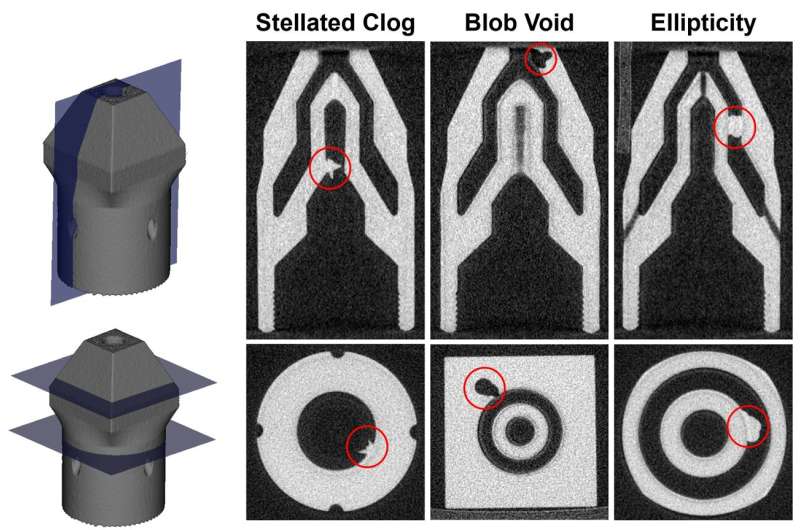
Researchers at the University of Illinois Urbana-Champaign have developed a new method for detecting defects in additively manufactured components.
One of the most important tasks in any factory is to determine whether a manufactured component is free of defects. In additive manufacturing (3D printing), it can be particularly challenging to find defects, because additive manufacturing can make components that have complex three-dimensional shapes and important internal features that are not easily observed.
The novel technology uses deep machine learning to make it much easier to identify defects in additively manufactured components. To build their model, researchers used computer simulations to generate tens of thousands of synthetic defects—which exist only in the computer.
Each computer-generated defect had a different size, shape, and location, allowing the deep learning model to train on a wide variety of possible defects and to recognize the difference between components that were defective and those that weren’t.
The algorithm was then tested on physical parts, some of which were defective and some of which were defect-free. The algorithm was able to correctly identify hundreds of defects in real physical parts that have not previously been seen by the deep learning model.
“This technology addresses one of the toughest challenges in additive manufacturing,” said William King, Professor of Mechanical Science and Engineering at Illinois and the project leader. “Using computer simulations, we can very quickly build a machine learning model that identifies defects with high accuracy. Deep learning allows us to accurately detect defects that were never previously seen by the computer.”
The research, published in the Journal of Intelligent Manufacturing in a paper titled “Detecting and classifying hidden defects in additively manufactured parts using deep learning and X-ray computed tomography,” used X-ray computed tomography to inspect the interior of 3D components having internal features and defects that are hidden from view. Three-dimensional components can be easy to make with additive manufacturing, but difficult to inspect when important features are hidden from view.
The authors are Miles Bimrose, Sameh Tawfick, and William King from University of Illinois Urbana-Champaign; Davis McGregor from University of Maryland; Chenhui Shao from University of Michigan; and Tianxiang Hu, Jiongxin Wang and Zuozhu Liu from Zhejiang University.
More information:
Miles V. Bimrose et al, Detecting and classifying hidden defects in additively manufactured parts using deep learning and X-ray computed tomography, Journal of Intelligent Manufacturing (2024). DOI: 10.1007/s10845-024-02416-0
University of Illinois Grainger College of Engineering
Citation:
Researchers use machine learning to detect defects in additive manufacturing (2024, June 4)
retrieved 5 June 2024
from https://techxplore.com/news/2024-06-machine-defects-additive.html
This document is subject to copyright. Apart from any fair dealing for the purpose of private study or research, no
part may be reproduced without the written permission. The content is provided for information purposes only.










